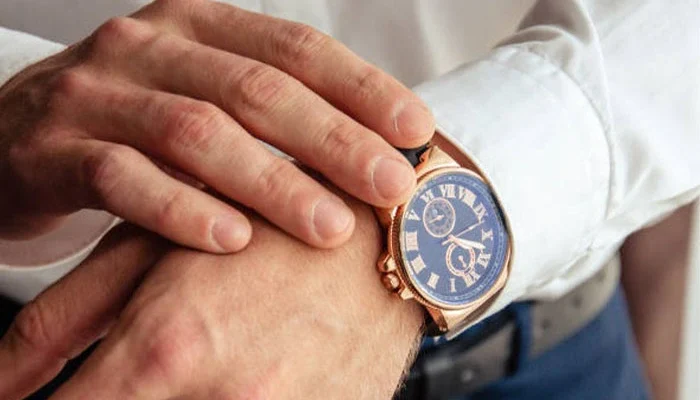Introduction
Watches have captivated the world for centuries as time-telling devices and symbols of elegance and design mastery. In today’s world, Movado watches continue to set the benchmark for seamlessly combining sophistication with state-of-the-art technology. These timeless pieces fulfill their fundamental purpose and elevate personal style to new heights.
A fascinating journey where functional innovation and aesthetic appeal collide is represented by the evolution of watches. From their humble beginnings to their current status as essential fashion accessories, timepieces have evolved, continuously fusing precision engineering with creative craftsmanship. This article explores these complex worlds and shows how modern timepieces are both aesthetically pleasing and precisely practical.
Timeless Elegance Meets Modern Technology
Throughout history, watches have been both social status symbols and amazing works of engineering. They are the masters of the careful art of making watches that are both beautiful and useful. Smart technologies of today live alongside the classic systems made by hand in the past. This beautiful harmony is captured in modern watches, like the famous Movado watches. By combining cutting-edge technology with carefully thought-out design, they make a stylish companion that does more than just tell time.
Even though digital displays are more common now, people still like the simple elegance and careful building of traditional watches. Many of them, like the precision timekeepers, use cutting-edge technology while still keeping the classic beauty that has been linked with fine watchmaking for generations. Whether it’s the smooth movement of a mechanical second hand or the cutting-edge features of a smartwatch, the end result is a beautiful mix of old and new styles.
A Brief History of Watchmaking
The journey of the watch is one of innovation and adaptation. Timepieces have undergone radical transformations, from the unreliable early pocket watches of the 16th century to the introduction of wristwatches in the 20th century. Advances like the deployment of the escapement mechanism improved accuracy, while World War I popularized the need for wristwatches due to their convenience. As detailed in Britannica’s article on watches, the introduction of the quartz watch in the 1970s marked a pivotal moment. This technology changed the industry by making it much more precise and lowering the cost of output by a huge amount. Watches use a quartz crystal that moves very consistently, making them the most accurate way to tell time ever. This change helped equalize watches, making them easier for more people to get and more important in everyday life.
The Science Behind Precision Watches
Every watch has a smooth, polished outside that hides a complicated world of micro-engineering inside. Gears, springs, and gems in modern watches are made with very fine tolerances. Each part works with the others to give accurate time readings, which are important for both pros and hobbyists.
For instance, the balance wheel and hairspring control the ticks of the watch, which is a very accurate way to tell time. Improvements in materials, like silicon, which is used because it is antimagnetic, make things reliable and long-lasting. Because of these scientific advances, watches can work perfectly in a wide range of situations, such as underwater, in space, or just while doing normal things.
How Design Influences Functionality
When designing a watch, every part is carefully chosen to make sure it looks good and works well. For example, the watch face often has useful features like luminous hands for reading in low light or a tachymeter bezel for measuring speed. The material of the watch also says a lot about how it’s meant to be used. Stainless steel is strong and has a polished look; ceramic has a modern feel and is very scratch resistant; and leather bands add a touch of classic elegance. These choices not only make the watch easier to wear every day, but they also show off the wearer’s personality and way of life.
Top Features in Today’s Watches
Modern watches go beyond their traditional purpose by adding many features that are useful for today’s lives. Many of them come with water resistance built in, so people can go on trips in the water without worrying. Chronograph features are great for sports fans who like to keep accurate time records.
Also, new technology has made its way into the watch business, giving people the ability to track their fitness, connect their calendars, and get push alerts on their wrists. With these features, watches are more than just accessories; they become personal helpers that you can’t live without, using the power of connectivity and ease of use.
Eco-Friendly Innovations in the Watch Industry
The watch business is rising to the task of using eco-friendly methods as sustainability becomes more important. Brands are making solar-powered movements and using recycled materials for watches and their packages because more people want to buy eco-friendly watches. While keeping up high standards for style and functionality, these improvements are meant to reduce the industry’s carbon footprint.
Many more things are being made from recycled metals, plastics made from plants, and recyclable watch bands. Industry’s promise to protect the environment while making stylish, high-quality goods is shown by these programs. Concern for the environment is growing, and the move toward more sustainable watchmaking is a result. This combines moral responsibility with technical progress.
Global Trends in Watch Fashion
The world of watch fashion is very different and always changing. Classic designs will always be popular, but bold new trends in style are captivating people all over the world. Understated beauty comes from minimalist designs, while statement pieces with lots of small details and bright colors let people show off their own unique styles.
According to Vogue Business, the newest watch styles for 2024 represent how things are always changing by combining traditional craftsmanship with cutting-edge new ideas.
These styles are being driven by global fashion leaders and forward-thinking customers who want to push the limits of what a watch can be. As a result, the industry has become more creative, with timepieces that are both useful tools and fashion statements, each one showing how tastes and influences are changing around the world.
FAQs: Choosing the Right Watch for You
Buying a watch is a personal decision that is usually based on what works best for you and what you like. Think about your lifestyle to figure out what features you need, like water protection for swimmers or an HR monitor for athletes, and what materials will work best with your daily activities.
In addition to scientific details, design is very important. Figure out whether you like a classic, modern, or avant-garde style the most. Keep in mind that a watch should do its job and also make you feel good about yourself and stylish when you wear it.
Frugal Female Fashion: Tips for Women on a Budget 2024










Comments